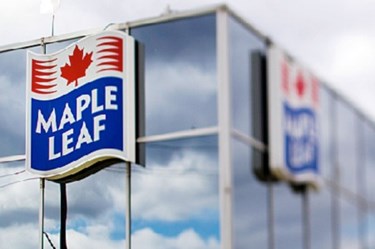Maple Leaf Foods Strengthens Profitability
By Karla Paris

Organizational restructuring and plan investments at the core of its packaged meat rebound
Maple Leaf Foods is in the final phase of implementing a strategy to significantly improve profitability and global competitiveness in its prepared meats supply chain. The company recently announced changes to its organizational structure and leadership that is slated to take effect upon the completion of its sale of 90 percent ownership in Canada Bread Company to Grupo Bimbo, which is expected to occur in the second quarter.
The transition of ownership will result in multiple changes within the company’s executive structure as roles are eliminated, consolidated, and some senior executives retire. Here is how Maple Leaf Foods Org Chart shakes out as of March 2014:
Maple Leaf Foods received great news from the U.S. Federal Government, that it is investing $5 million into Maple Leaf Foods’ Hamilton plant which will make it the most advanced prepared meats facility in North America. Under a federal agriculture and agri-food program, the company is being loaned half the cost of a new piece of machinery that's expected to make the production of deli meat safer and more efficient. Food manufacturers’ are taking note as Maple Leaf Foods will now be able to produce over 180 million pounds of deli meat annually, which will also be easier to trace with this new automation. The technology Maple Leaf intends to install with the government money is a fully automatic system for producing deli meats, which will sharply reduce the number of human hands that will touch the product as its goes through its processing system. Considering that an Ontario court recently fined Maple Leaf Consumer Foods $110,000 after a worker lost some fingers in a meat chopping machine, this automation seems to be a move in the right direction when considering the company’s desire to scale its prepared meats line.
Check out how automation boosted efficiencies for another food processor
Maple Leaf Foods notes that when the Hamilton facility is fully-functional it is expected to be able to produce 750 hotdog packages and 1,300 packages of prepared meat per minute. The increased efficiency is critical to the company as it struggles to recover from a 2013 net loss of $58.5 million, compared to profit of $42 million in 2012.
